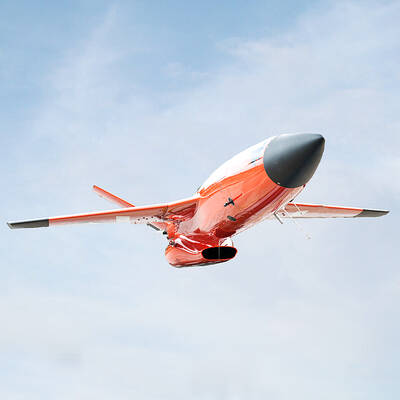Beijing’s island-building projects in the South China Sea might be much larger than previously thought, according to a US Pentagon report.
The report said that as of June, China had reclaimed 1,174 hectares of land — by piling sand on reefs in the Spratly Islands (Nansha Islands, 南沙群島) — up nearly 50 percent from May.
As recently as three months ago, the US Department of Defense believed China had claimed just 809 hectares.
“Washington fears that the islands will be used for military purposes and could create instability in one of the world’s biggest commercial shipping routes as China lays claim to what several other countries see as international waters,” the Wall Street Journal said.
The newspaper said that Pentagon officials believe that as China’s assertiveness grows, the risk of conflict with the US and its allies grows along with it.
The report “The Asia-Pacific Maritime Security Strategy” was ordered by Congress and comes a month before Chinese President Xi Jinping (習近平) is due to visit Washington.
“Rapid military modernization across the Asia-Pacific region has significantly increased the potential for dangerous miscalculations or conflict,” it said.
It said that many countries are significantly enhancing their maritime law enforcement capabilities as China is asserting sovereignty over disputed areas.
According to the report, China is modernizing every aspect of its maritime-related military law enforcement capabilities, including its naval surface fleet, submarines, aircraft, missiles, radar capabilities and coast guard.
At the same time, the report said that Beijing is developing high-end technologies intended to dissuade external intervention in a conflict and designed to counter US military technology.
“Although preparation for a potential Taiwan conflict remains the primary driver of Chinese investment, China is also placing emphasis on preparing for contingencies in the East and South China Sea,” it said.
The report said that the Pentagon is working to ensure continued freedom of the seas, deter conflict and coercion and promote adherence to international law.
“We are strengthening our military capability to promote stability and respond decisively to threats,” it said.
The report added that the US is leveraging military diplomacy to promote trust and stability.
The report said there should be no doubt that the US will maintain the necessary military presence and capabilities to protect “our interests and those of our allies and partners against potential threats.”
It said the US maintains 368,000 military personnel in the Asia-Pacific region and that over the next five years the US Navy will increase the number of ships assigned to the Pacific Fleet outside of US territory by 30 percent.
By 2020, 60 percent of naval and overseas air assets would be “home-ported” in the Pacific region, it said.

‘WIN-WIN’: The Philippines, and central and eastern European countries are important potential drone cooperation partners, Minister of Foreign Affairs Lin Chia-lung said Minister of Foreign Affairs Lin Chia-lung (林佳龍) in an interview published yesterday confirmed that there are joint ventures between Taiwan and Poland in the drone industry. Lin made the remark in an exclusive interview with the Chinese-language Liberty Times (the Taipei Times’ sister paper). The government-backed Taiwan Excellence Drone International Business Opportunities Alliance and the Polish Chamber of Unmanned Systems on Wednesday last week signed a memorandum of understanding in Poland to develop a “non-China” supply chain for drones and work together on key technologies. Asked if Taiwan prioritized Poland among central and eastern European countries in drone collaboration, Lin

The Chien Feng IV (勁蜂, Mighty Hornet) loitering munition is on track to enter flight tests next month in connection with potential adoption by Taiwanese and US armed forces, a government source said yesterday. The kamikaze drone, which boasts a range of 1,000km, debuted at the Taipei Aerospace and Defense Technology Exhibition in September, the official said on condition of anonymity. The Chungshan Institute of Science and Technology and US-based Kratos Defense jointly developed the platform by leveraging the engine and airframe of the latter’s MQM-178 Firejet target drone, they said. The uncrewed aerial vehicle is designed to utilize an artificial intelligence computer

Renewed border fighting between Thailand and Cambodia showed no signs of abating yesterday, leaving hundreds of thousands of displaced people in both countries living in strained conditions as more flooded into temporary shelters. Reporters on the Thai side of the border heard sounds of outgoing, indirect fire yesterday. About 400,000 people have been evacuated from affected areas in Thailand and about 700 schools closed while fighting was ongoing in four border provinces, said Thai Rear Admiral Surasant Kongsiri, a spokesman for the military. Cambodia evacuated more than 127,000 villagers and closed hundreds of schools, the Thai Ministry of Defense said. Thailand’s military announced that

CABINET APPROVAL: People seeking assisted reproduction must be assessed to determine whether they would be adequate parents, the planned changes say Proposed amendments to the Assisted Reproduction Act (人工生殖法) advanced yesterday by the Executive Yuan would grant married lesbian couples and single women access to legal assisted reproductive services. The proposed revisions are “based on the fundamental principle of respecting women’s reproductive autonomy,” Cabinet spokesperson Michelle Lee (李慧芝) quoted Vice Premier Cheng Li-chiun (鄭麗君), who presided over a Cabinet meeting earlier yesterday, as saying at the briefing. The draft amendment would be submitted to the legislature for review. The Ministry of Health and Welfare, which proposed the amendments, said that experts on children’s rights, gender equality, law and medicine attended cross-disciplinary meetings, adding that